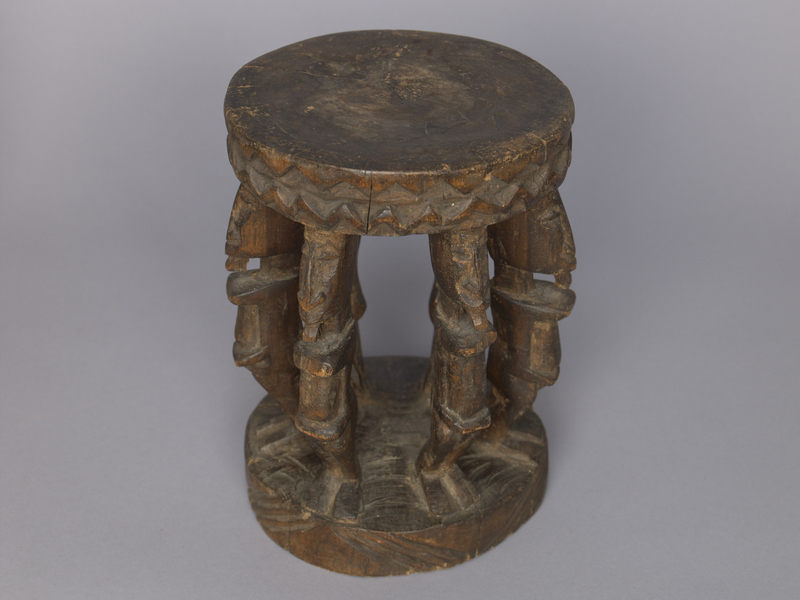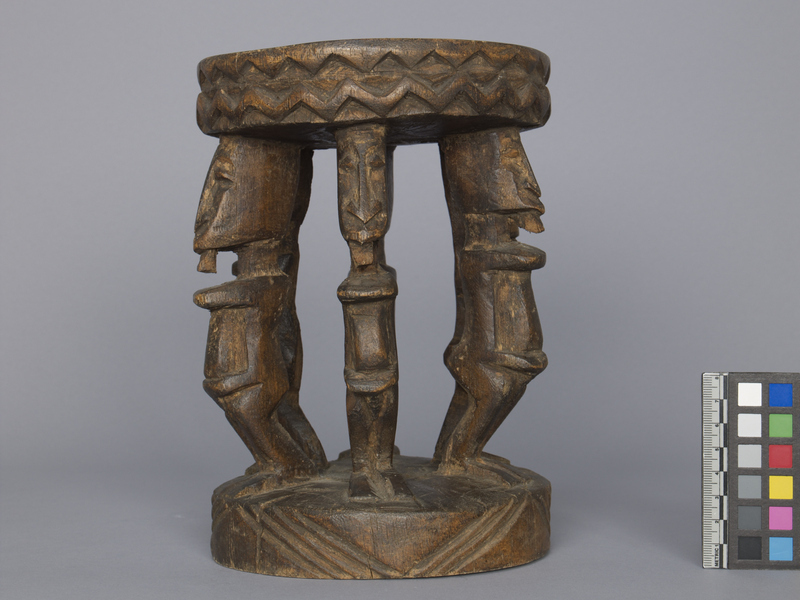Stool Item Number: 3035/1 from the MOA: University of British Columbia


Description
Carved wooden stool with a flat seat, made of a thick, round slab of wood, carved along the edge in lines of encircling triangles and zig zags. The seat is supported by 6 human figures, each with a large head, long face with carved eyes, long nose and upturned mouths, and small beard below chin. Torsos protrud, backs sway slightly, knees bend, and lower legs recede. Feet are large. The figures stand on a round platform similar in size and shape to the seat. It is decorated with incised diagonal lines along the edge.
History Of Use
Blacksmith's stool.
Narrative
Acquired by the donor while he was in Mali making a film on the Dogon.
Iconographic Meaning
The upper and lower discs of the stool are commonly interpreted as heaven and earth, while the serpentine pattern on the upper disc is thought to be an ode to Lebe, one of the eight original ancestors of all mankind. Lebe is the first death in Dogon mythology, and the Sigi ceremony, held every sixty years, attempts to commeorate it. According to Dogon myth, when Lebe's grave was dug up a living snake was found instead of his bones. The transformation demonstrates the ability for primordial beings to become spirits, and indicates Lebe's regenerative powers.
Item History
- Made in Mopti, Mali before 1977
- Collected during 1977
- Owned by Rudi Kovanic before November 21, 2013
- Received from Rudi Kovanic (Donor) on November 21, 2013
What
- Name
- Stool
- Identification Number
- 3035/1
- Type of Item
- stool
- Material
- baobab wood ?
- Overall
- height 22.1 cm, width 1.5 cm, diameter 15.6 cm
Who
- Culture
- Dogon
- Previous Owner
- Rudi Kovanic
- Received from
- Rudi Kovanic (Donor)
Where
- Holding Institution
- MOA: University of British Columbia
- Made in
- Mopti, Mali
When
- Creation Date
- before 1977
- Collection Date
- during 1977
- Ownership Date
- before November 21, 2013
- Acquisition Date
- on November 21, 2013
Other
- Condition
- good
- Accession Number
- 3035/0001